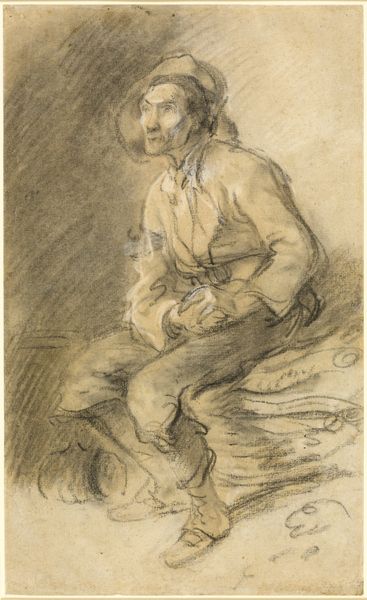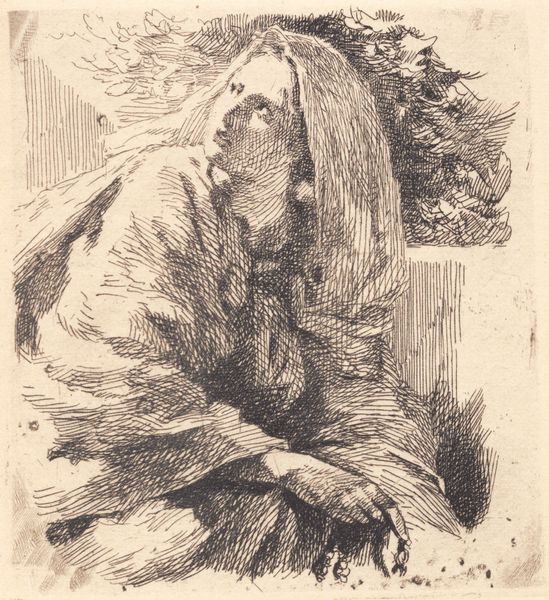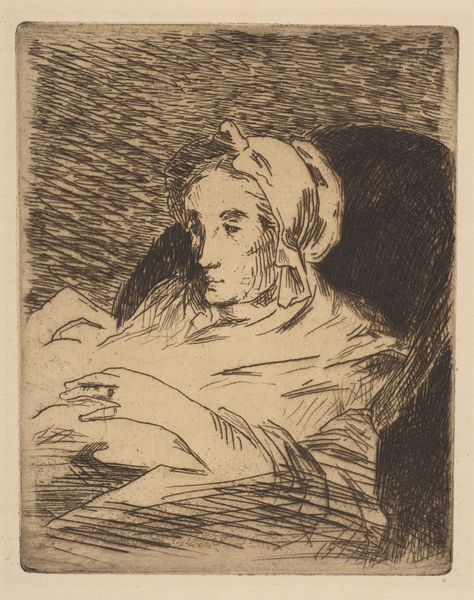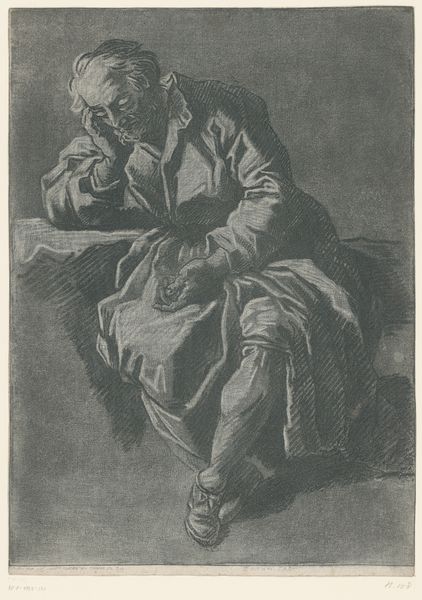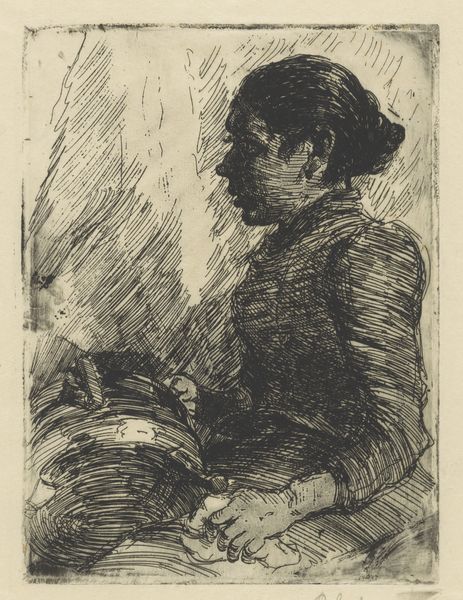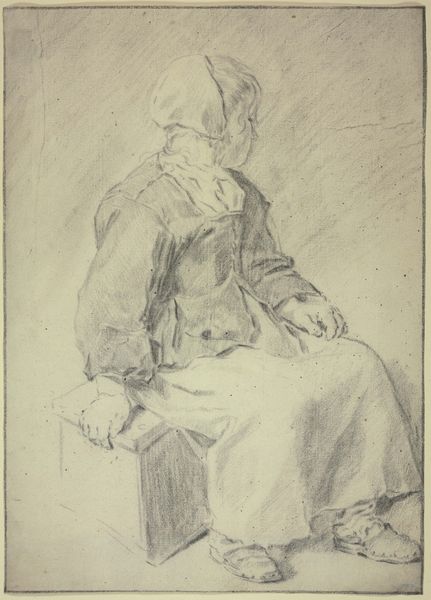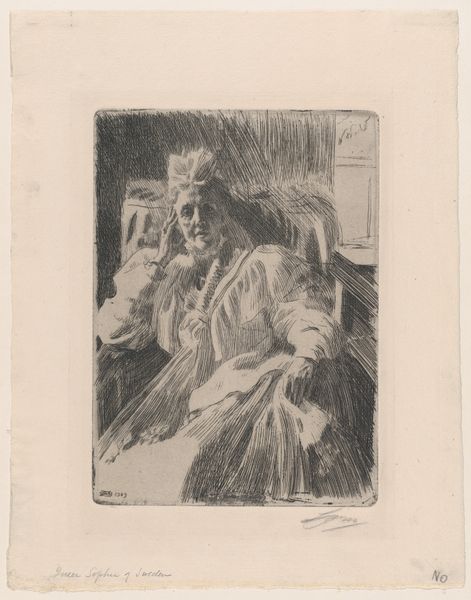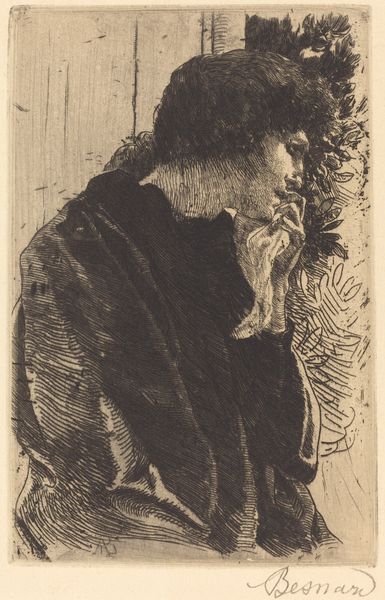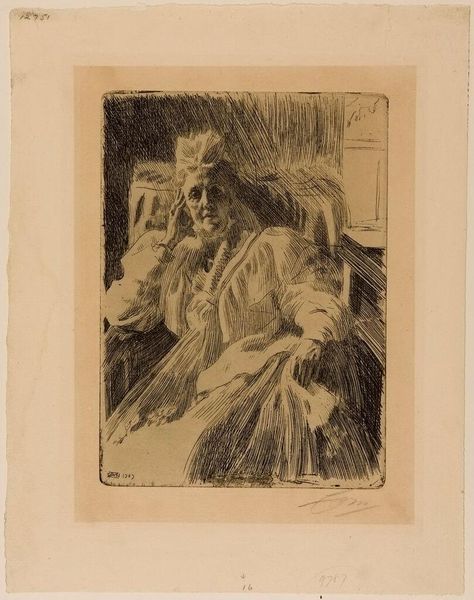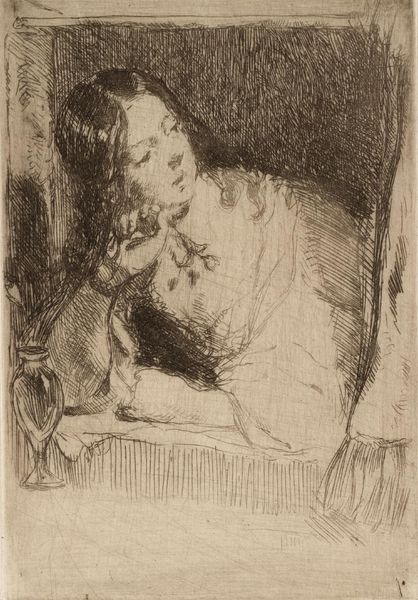
Copyright: National Gallery of Art: CC0 1.0
Curator: This etching by Anders Zorn, titled "Madonna," created around 1900, captures a certain introspective mood. What's your first impression? Editor: There's a powerful melancholia emanating from it, wouldn’t you say? The contrast between the dark, brooding background and the luminous face is quite striking. I am immediately drawn into the process behind the making of it. Curator: Absolutely. Notice how Zorn employs a complex system of cross-hatching, really giving us this intense play between light and shadow, guiding our eye to the central figure. This interplay of darkness really reinforces the emotional core of the piece. Editor: Yes, the use of hatching is significant. We should address the labor and skill invested. The repetitive mark-making speaks volumes about the etcher’s engagement with his medium, with the slow labor and deliberate hand required in the labor and reproductive process that printmaking and distribution involves. Curator: I'm intrigued by the tilt of her head and the downward gaze, suggestive of some inner turmoil, and her features have been constructed with a wonderful structural sensibility through a linear network of complex angles and shapes. It’s quite fascinating. Editor: Let's consider that "Madonna" is charged and loaded with a very complex range of symbolisms from various cultural and material practices—from domestic economies, notions of femininity, labor, and artistic skill to the networks that sustain and shape the production and reception of artworks and imagery. What materials were easily at his disposal? Curator: Precisely. By simplifying forms into pure line and stark compositions, Zorn uses minimalism to hint at a more intricate matrix of significations, and that is so powerful in his works! It's not just about the lines themselves, it's what those lines represent. Editor: A print allows for broader accessibility—multiple iterations to be disseminated. Think of who that Madonna's imagery and visuality serves and what are the complex systems it reflects. Curator: It is incredible to reflect on how effectively Zorn employed printmaking techniques and compositional elements to reveal layers of complexity. Editor: Definitely. Understanding the socio-economic conditions and material processes makes me reflect on the artistic skills involved in making such print reproductions accessible at that time.
Comments
No comments
Be the first to comment and join the conversation on the ultimate creative platform.

